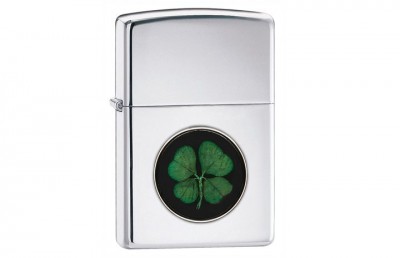 If you have a superstition or a good luck charm, you’re not alone. A recent survey polling 1,000 Americans reveals 72 percent believe luck contributes to their success, and one in 10 believe luck is the most important factor.
If you have a superstition or a good luck charm, you’re not alone. A recent survey polling 1,000 Americans reveals 72 percent believe luck contributes to their success, and one in 10 believe luck is the most important factor.
But there’s a difference in how generations think about luck. In fact, millennials are the most likely to say they need their lucky token on job interviews, while boomers are more likely to bring their symbol of luck to a casino. There are so many popular good luck charms throughout history, but have you ever wondered how those items came to be viewed as lucky?
Here’s the story behind some common good luck charms throughout history:
Four-leaf clover
According to legend, the luck of the four-leaf clover goes back to Eve, who supposedly carried one out of the Garden of Eden. Others believe in their power because they’re simply so rare to find. For every 10,000 three-leaf clovers, there is only one four-leaf. The four leaves represent faith, hope, love and luck.
Horseshoe
One of the most common symbols of luck, horseshoes were first considered lucky by blacksmiths. People believed that fire and iron had magical powers and would ward off spirits of the past. But be careful with how you hold or display your horseshoe — it’s only good luck if the ends point upward.
Pocket lighter
Created in 1932, the Zippo Windproof Lighter has long been considered a lucky talisman. One instance of a Zippo Windproof Lighter coming in handy is the story of First Lieutenant Harold Fritz. During the Vietnam War, Fritz was leading a column of heavily armored vehicles through Quan Loi when they were ambushed by North Vietnamese fighters. Thrown from his vehicle, Fritz led a point-blank charge on the enemy and was hit several times by shrapnel and small-arm rounds. After being evacuated from the battlefield, he found the lighter his wife had given him as a going away present. He was shocked to find that the lighter, which he kept in his left breast pocket, had stopped a bullet that otherwise would have killed him. Fritz received a Medal of Honor from President Nixon in 1971 and, to this day, he still carries his Zippo wherever he goes.
Rabbit’s foot
These days, you can get a rabbit’s foot in a vending machine or as an arcade prize, but using a rabbit’s foot as a good luck charm dates back to the Celtics in 600 B.C. However, the Celtics were very specific with this superstition. It had to be the left hind foot of the rabbit in order to be considered lucky.
The color green
Green isn’t just the color of money; according to the survey, it’s also believed to be the luckiest hue. Green is a symbol for positive change, health, growth and vitality. In Irish folklore, if you catch a green-clad leprechaun and then set him free, you’ll be blessed with treasure.
The number seven
Nineteen percent of those surveyed see the number seven as the luckiest charm of all. This number plays an unexpected role throughout nature and our daily lives, leading many to believe in its good fortune. From the seven days in the week, seven colors of the rainbow, seven notes on the musical scale, the seven seas to the seven continents, we may not even realize how present it is.
Penny
You know the rhyme: “Find a penny, pick it up, all day long you’ll have good luck.” But where did this originate? The penny superstition dates back to ancient times, when people believed metal had the power to protect them from evil spirits. Once people began to use coins as currency, those who had more coins were wealthy and their money symbolized good fortune.
Whether you believe in luck or not, it’s fascinating to know the stories behind each of these famous good luck charms. To find your very own token, visit zippo.com/luck.

